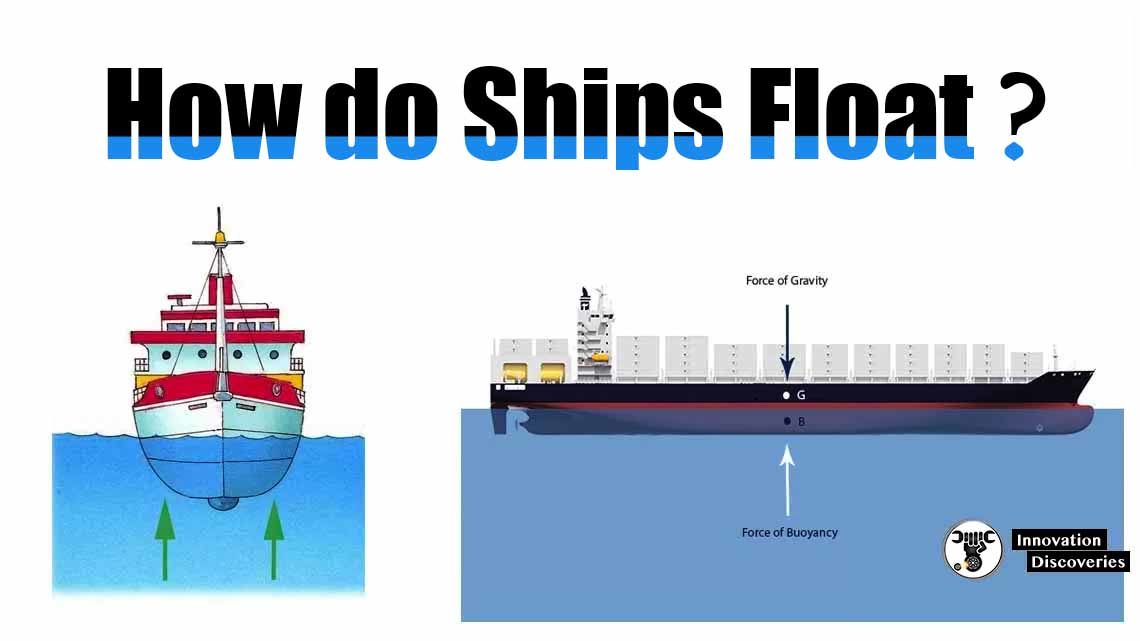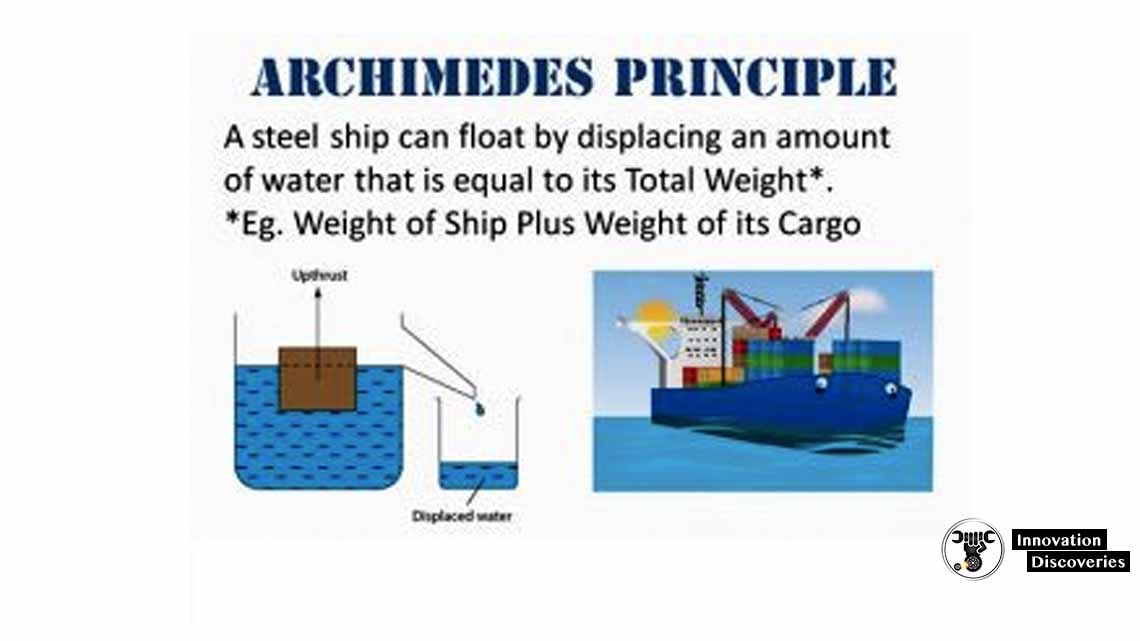
Now, this is the question of which everyone must have pondered over as a kid.
Why something so heavy does not sink but floats and floats and carries so much cargo at times.
Well, today, we will understand why ships float!
Now, Everything in this world is ruled by classical physics, and so does this phenomenon.

Before we jump on to the science and math of why ships float, we have to pay some due respect to the guy; Because of which we have the answer to this curious question.
That guy is Archimedes, Archimedes was a scientist and much more. He was a genius, and some people even regarded him as being mentally retarded.
The legend has it that the king gave him a task to adjudge whether his crown was made up of pure gold or not.
Now Archimedes was having a bath in his bathtub and also pondering over the task at hand.
Nobody knows what happened, but somehow the water movement in his Bathtub led him to formulate the Archimedes principle.

Archimedes’ principle states that
”The upward buoyant force that is exerted on a body immersed in a fluid, whether fully or partially submerged,
Is equal to the weight of the fluid that the body displaces”
So how does it fit into this equation or our question that “why ships float?”,
It is evident that when the body’s weight is less than the weight of the fluid it displaces, then that object will float and not sink. The game is off the volume vs weight.
All sorts of objects can float in water regardless of their shape or solidity.
Whether an object is flat or pointy or hollow or solid- does not affect its ability to float in water.
What determines whether something floats or sinks in the water?
When an object enters the water, it pushes out water to make room for itself.
The object pushes out a volume of water that is equal to its own volume.
This is called displacement.
We observe displacement when we take a bath.
As we get into the bathtub, the water level rises. Displacement happens when an object enters the water.
Two forces act on an object when it enters water: a downward force called gravity and an upward force called buoyancy.
An object’s weight measures the downward force of gravity that acts on it.
The upward force, or buoyant force, that acts on an object in water is equal to the water’s weight displaced by the object.
Any object in water has some buoyant force pushing up against gravity, which means that any water object loses some weight.
If the object displaces an amount of water equal to its own weight, the buoyant force acting on it will be equal to gravity—and the object will float.
But, if the object weighs more than the water it displaces, the buoyant force acting on it will be less than gravity, and it will sink.
How compact, or closely packed, an object determines how much water it will displace and, therefore, whether it will float or sink.
This compactness is referred to as density.
Density is mass per unit volume.
If an object is more compact, or denser than water, it will sink in water. If an object’s density is less than the density of water, the object will float in water.
This piece of steel is denser than water.
If steel is denser than water, then why does a steel ship float? A ship floats when it can displace water equal to its own weight.
What’s more, a steel ship is not made of solid steel. It is hollow and contains a lot of air. Air is a much less dense substance than steel.
Calculating a steel ship’s density with the formula, “density equals mass over volume” should show that the steel ship is less dense than water.
The ship’s volume is so great that its ratio of mass to volume is less than that of water.
The buoyant force pushing up on the ship is equal to the gravity pulling the ship down.
This is why the ship floats.



2 Comments